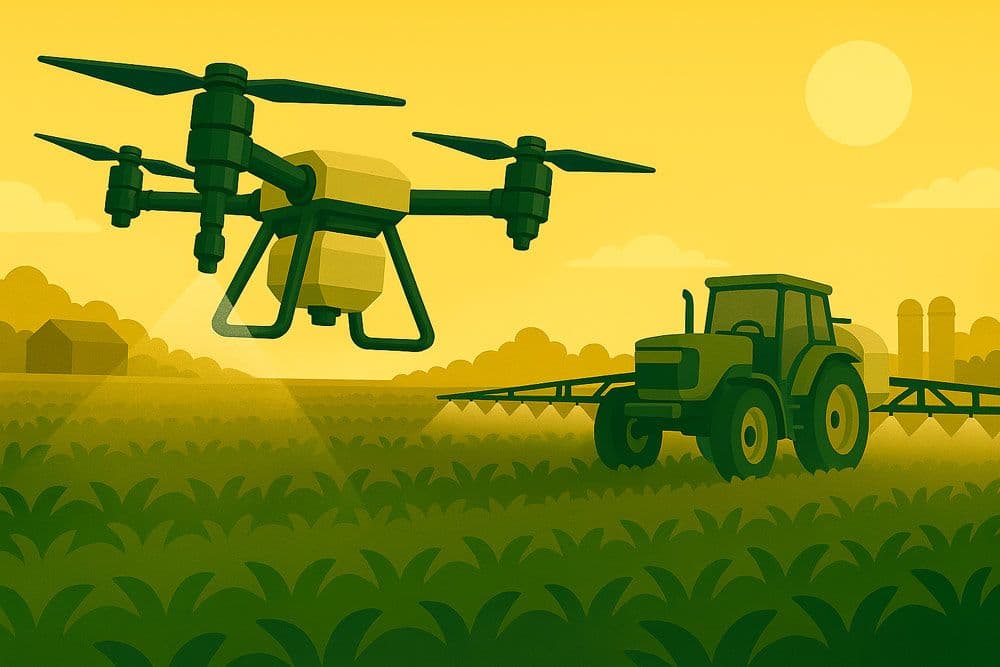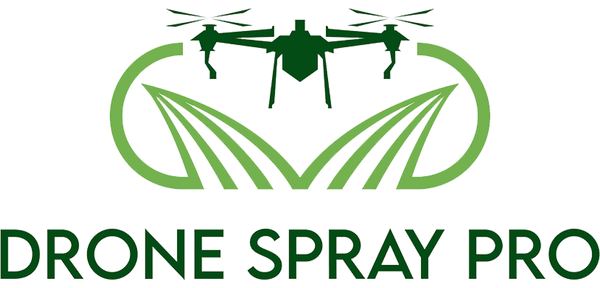
How Spray Drones Can Replace Traditional Sprayers
Share
Agriculture has always been an industry that marries tradition with innovation, but in recent years, technological advancements have pushed the boundaries of what’s possible on the farm. One of the most transformative developments is the use of agricultural drones for spraying and crop management. These high-tech tools are not just a novelty - they’re poised to replace conventional methods like ground sprayers and crop dusting planes in many scenarios.
In this article, we’ll dive into how spray drones are revolutionizing farming processes, highlighting their efficiency, precision, and versatility. Drawing insights from a farmer’s firsthand experience, we’ll unpack why drones are increasingly becoming a go-to solution for modern agriculture.
The Challenges of Traditional Spraying
Every farmer knows the unpredictability of the weather and its implications for crop management. Rain, for example, can leave fields too muddy for traditional ground sprayers, delaying critical applications of fungicides or fertilizers. Similarly, aerial spraying via crop dusters or helicopters may lack the precision needed to target crop canopies effectively. These limitations can compromise the health of plants and ultimately affect yields.
Enter the Spray Drone
Spray drones emerge as a game-changer in these scenarios. Operating autonomously and capable of flying just 12 feet above crops, drones can deliver chemicals with unmatched precision, even in less-than-ideal conditions. The farmer featured in our case study illustrates how drones excel in scenarios where conventional equipment falls short, such as after heavy rain when fields are inaccessible to ground rigs.
Key Benefits of Spray Drones in Agriculture
Spray drones offer several compelling advantages over traditional methods. Let’s take a closer look at why they’re becoming indispensable tools for tech-savvy farmers:
1. Adaptability to Wet or Difficult Terrain
Unlike ground rigs that can’t operate in wet or muddy fields, drones hover above crops, eliminating the need to make physical passes through the field. This capability allows farmers to maintain their spraying schedules even after rain, ensuring that critical applications are not delayed.
2. Enhanced Precision
Spray drones are equipped with GPS-guided technology that allows for fully autonomous operation. Once programmed, drones can map out routes, avoid obstacles like telephone wires, and adjust their spray paths for optimal coverage. This precision minimizes waste and ensures that chemicals are applied exactly where they’re needed.
3. Superior Canopy Penetration
One standout feature of spray drones is their ability to push chemicals deep into the crop canopy. Unlike airplanes, which spray from 40 feet above the ground, drones hover much closer, with their propellers creating a downward force that drives chemicals onto every leaf. This ensures better coverage, especially for dense crops like corn.
4. Time and Labor Efficiency
A single drone can spray up to 50 acres per hour, depending on field conditions. While setup, refilling, and battery changes add to the total time, drones still provide a level of efficiency that can outpace many conventional methods. Additionally, automation reduces the need for manual labor, allowing farmers to focus on other tasks during spraying operations.
5. Environmental Sustainability
By applying chemicals with precision, drones help reduce over-application and runoff, promoting more sustainable farming practices. This is especially critical for farmers looking to balance high yields with environmental stewardship.
Transforming Custom Spraying Businesses
The possibilities don’t stop with crop management on one’s own farm. Spray drones are also opening doors for entrepreneurial ventures in custom agricultural spraying. The farmer in the case study operates a custom application business, showcasing how drones can be used to serve multiple clients efficiently. With a competitive rate per acre and the ability to rapidly move between fields, spray drones provide an attractive business opportunity for those looking to diversify their income streams in agriculture.
Overcoming Operational Challenges
While the advantages of spray drones are clear, they do come with their own set of logistical considerations:
- Battery Management: Spray drones rely on high-capacity batteries, which must be charged frequently to maintain uninterrupted operation. Investing in additional generators or battery sets can help ensure that downtime is minimized.
- Working at Night: In some cases, like when rain delays daytime spraying, farmers may find themselves operating drones at night. As demonstrated in the case study, proper lighting and preparation are critical for smooth nighttime operations.
- Regulatory Compliance: Operating drones for commercial purposes often requires specific licenses and certifications. Farmers should familiarize themselves with Federal Aviation Administration (FAA) regulations to ensure compliance.
Practical Insights for Drone Operation
From the farmer’s experience, a few practical tips emerge for those considering spray drones:
- Invest in Reliable Equipment: The farmer highlights the importance of having a robust generator system to keep batteries charged. Downtime can cut into productivity, especially during peak spraying seasons.
- Plan Routes Ahead of Time: Pre-mapping fields using software like Pix4D can streamline drone operations, ensuring that obstacles like power lines are accounted for in the flight path.
- Optimize Chemical Use: The farmer’s method of mixing chemicals and agitating them in a cone tank ensures consistent application. Using the right products at the right time is key to preserving yields and tackling disease pressures.
- Track Costs and Revenue: For those running custom drone spraying businesses, meticulous record-keeping is essential. The farmer uses automated spreadsheets to calculate costs and generate invoices efficiently.
The Future of Spray Drones
As awareness of the benefits grows, spray drones are likely to become a staple in modern agriculture. The farmer in the case study projects increased demand for drone services, particularly during wet seasons when other equipment is sidelined. The technology is still evolving, with potential for even greater efficiency and integration with other precision agriculture tools.
Key Takeaways
- Spray drones excel in challenging conditions, such as wet or inaccessible fields, where traditional equipment cannot operate.
- Precision and canopy penetration are major advantages of drone spraying, ensuring chemicals reach every part of the plant for maximum effectiveness.
- Automation and GPS technology minimize labor requirements and enhance operational efficiency.
- Drones promote sustainable farming practices by reducing over-application and chemical runoff.
- For entrepreneurial farmers, custom spraying businesses offer a lucrative opportunity with drones.
- Preparation is key: Ensure you have the necessary equipment, licenses, and plans in place for smooth operations.
- Battery management and nighttime setups can be challenging but are manageable with proper planning.
Conclusion
The adoption of spray drones represents a significant step forward for agriculture, combining cutting-edge technology with practical benefits for farmers and agribusinesses. Whether you’re looking to improve the efficiency of your own farm or start a custom drone spraying business, these innovative tools are reshaping what’s possible in crop management. As the farmer in the case study demonstrated, embracing this technology not only enhances productivity but also opens doors to new opportunities, even in the most challenging of circumstances.
It’s clear that spray drones are not just a trend - they’re the future of farming. For those ready to take the leap, the time to start exploring their potential is now.
Source: "Can a Spray Drone Really Replace a Sprayer?" - HiTech Farmer, YouTube
